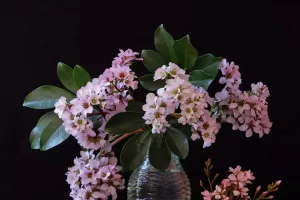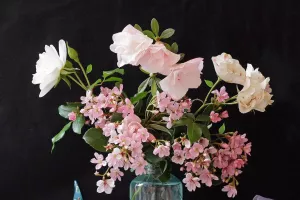Tulip is a plant of Liliaceae and tulip. Tulip leaves are generally 3-5, strip lanceolate to egg lanceolate. The flower is single and terminal, large and gorgeous, and the perianth is red or mixed with white and yellow, sometimes pure white, or pure yellow. Tulip petals are 5 ~ 7 cm long and 2 ~ 4 cm wide.
The flowering period is from April to May. Tulips originated in Turkey and later introduced into Europe. They were popular in Belgium, Holland, and Britain in the mid-17th century.
Tulips were originally wildflowers in Central Asia. It was first planted by the Turks in 1000 A.D. Turkey was the first country to cultivate tulips, and there are only simple records in ancient literature. In Europe, during the Holy Roman Empire in 1554, Busbecq, a Belgian diplomat living in the Ottoman Empire, brought tulip bulbs and seeds into Europe for the first time and cultivated them in private gardens in Vienna, which attracted great attention in the horticultural circle. Five years later, Conrad von Gessner, a Swiss naturalist, saw tulips in Vienna and named them and published them in his book Hortis Germa-Niae. Two years later, tulips spread from Istanbul, Turkey to Augsburg, southern Germany.
Tulips like sunshine but wind. They like warm and humid winter and cool and dry summer. Tulips like slightly acidic sandy soil with rich humus, loose and fertile, and good drainage. They are important spring bulb flowers and suitable for cluster planting, flower bed and flower border. They can also be used as cut flowers and flower arrangement to decorate the room. They can also be potted for viewing in winter.
Tulips have many complex hybrid varieties, which are usually planted for flower appreciation in spring. More than 3500 tulip names are currently listed (J. van Scheepen 1996). Although some of these species or cultivated varieties may last for a short time, they are rarely truly naturalized in the flora. Because of its long-term cultivation, hybridization and selection, tulips have difficulties in taxonomy everywhere.
Tulips are the national flowers of Holland, New Zealand, Iran, Turkey, Afghanistan, Turkmenistan, and some other countries. Tulips symbolize holiness, happiness, and victory. In European and American novels and poems, tulips are regarded as a symbol of victory and good, as well as beauty and elegance. The appearance and color of this flower are very noble, brilliant, and colorful.


